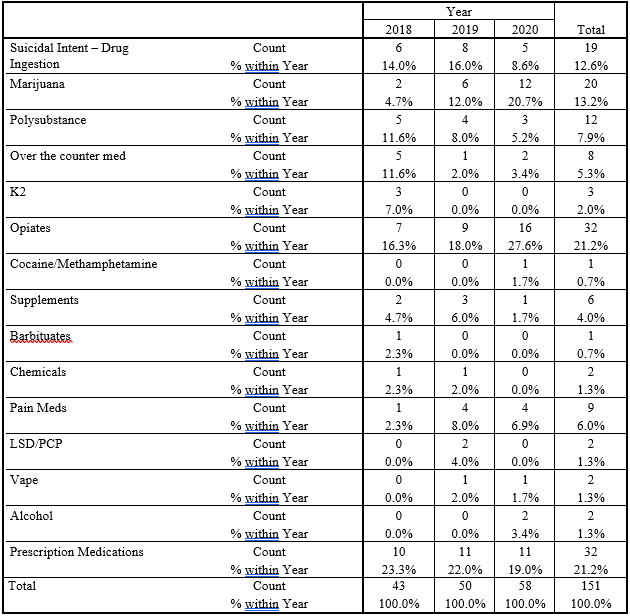Injury Prevention
Injury Prevention 2
314 - A Retrospective Review on Pediatric Ingestions – Trends During the COVID-19 Pandemic
Monday, May 1, 2023
9:30 AM - 11:30 AM ET
Poster Number: 314
Publication Number: 314.42
Publication Number: 314.42
Caroline Browning, St. Christopher's Hospital for Children, Blue Bell, PA, United States; Jack D. Halligan, St. Christopher's Hospital for Children, Philadelphia, PA, United States; Catherine Burdett, Saint Christopher’s Hospital for Children, Philadelphia, PA, United States; Evan Turner, Drexel University College of Medicine, Pittsburgh, PA, United States

Jack D. Halligan, PGY-3 (he/him/his)
Resident
St. Christopher's Hospital for Children
Philadelphia, Pennsylvania, United States
Presenting Author(s)
Background: The COVID-19 pandemic has been of growing interest due to the vast changes it made in medicine and for the general public seeking medical care. There has been a dramatic decrease in pediatric emergency department visits, however, the proportional declines in ingestions and mental health visits were less pronounced. Data from the US Centers for Disease Control and Prevention has shown an increase in call volume to poison control centers, but there have not been any evaluations on specific ingestions. In adults, specifically, opioid ingestions have been noted to increase during the COVID-19 pandemic, but this trend has not been compared to ingestions in children.
Objective: To investigate ingestion trends before and during the COVID-19 pandemic, seeing if the mandatory stay-at-home order played a difference in ingestion rates in children
Design/Methods: Our study retrospectively reviewed all pediatric ingestions between the years 2017-2020 that were seen at St. Christopher’s Hospital for Children to identify which ingestions were more frequently encountered at home due to the mandatory stay-at-home order as a result of the COVID-19 pandemic. Additionally, we also examined the time to Emergency Department (ED) presentation, length of observation period, time of ingestion, and hospitalization rate.
Results: Fisher’s exact tests were used for our analysis. There was no observed statistical significance for any of the independent variables. Comparisons of at-home categories defined in methods, also revealed no statistical differences between calendar periods. There were higher percentages of patients kept in the ED for observation in 2019 - 19.3% increasing to 37.0% (p< 0.028). Additionally, a lower percentage of patients were hospitalized in 2019 (64.4%) versus 2018 (80.7%, p< 0.041). When looking at each year, ingestion rates have increased across the three years of the study in several categories, including marijuana, opiates, cocaine/methamphetamine, and alcohol. There were 151 total ingested substances across the entire sample.
Conclusion(s): The mandatory Pennsylvania stay-at-home order was not associated with a statistical difference in ingestion rates, nor was there a statistical difference in independent variables compared throughout 2018-2020. Marijuana, opiates, cocaine/methamphetamine and alcohol ingestion rates in the pediatric population has increased across those three years, which also mimics the trend seen in the adult population. Due to this trend, we urge to seek additional safety measures and provide anticipatory guidance to those in our area to help prevent the increase in this trend.

